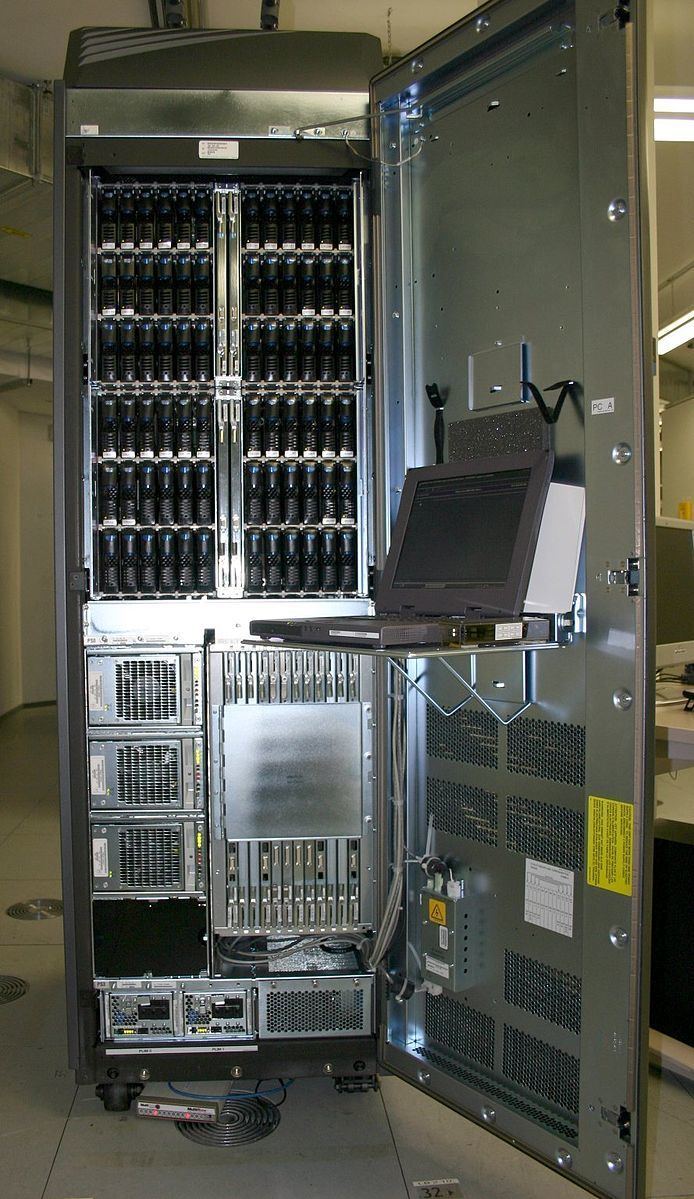 | ||
The Symmetrix system is EMC Corporation's enterprise storage array. It was the flagship product of EMC in the 1990s and 2000s.
Contents
History
Symmetrix arrays, EMC's flagship product at that time, began shipping in 1990 as a storage array connected to an IBM mainframe via the block multiplexer channel. Newer generations of Symmetrix brought additional host connection protocols which include ESCON, SCSI, Fibre Channel-based storage area networks (SANs), FICON and iSCSI. The Symmetrix product was initially popular within the airline industry and with companies that were willing to deviate from the safety of IBM's 3390 disk subsystem and take a risk with the unproven Symmetrix array. This product is the main reason for the rapid growth of EMC in the 1990s, both in size and value, from a company valued hundreds of millions of dollars to a multi-billion company. Moshe Yanai managed the Symmetrix development from the product's inception in 1987 until shortly before leaving EMC in 2001, and his Symmetrix development team grew from several people to thousands.
Models
The Direct Matrix Architecture (DMX) product line with models DMX800, DMX1000 and DMX2000 were announced in February 2003.
Symmetrix Remote Data Facility
The Symmetrix Remote Data Facility (SRDF) is a family of [ software products that facilitates the data replication from one Symmetrix storage array to another through a storage area network or Internet Protocol (IP) network.
SRDF logically pairs a device or a group of devices from each array and replicates data from one to the other synchronously or asynchronously. An established pair of devices can be split, so that separate hosts can access the same data independently (maybe for backup), and then be resynchronised.
In synchronous mode (SRDF/S), the primary array waits until the secondary array has acknowledged each write before the next write is accepted, ensuring that the replicated copy of the data is always as current as the primary. However, the latency due to propagation increases significantly with distance.
Asynchronous SRDF (SRDF/A) transfers changes made to the secondary array in units called delta sets, which are transferred at defined intervals. Although the remote copy of the data will never be as current as the primary copy, this method can replicate data over considerable distances and with reduced bandwidth requirements and minimal impact on host performance.
Other forms of SRDF integrate with clustered environments and to manage multiple SRDF pairs where replication of multiple devices must be consistent (such as with the data files and log files of a database application).
Other features
VMAX
EMC Symmetrix VMAX systems are storage platforms intended for open systems and mainframe computing. Symmetrix VMAX systems run the Enginuity operating environment. The system scales from a single Symmetrix VMAX Engine system with one storage bay to a large eight-engine system with a maximum of ten storage bays.
The VMAX system bay can hold 1-8 engines. These engines house the hardware for all the data processing capabilities. Each engine contains 2 director boards, memory chips, and front-end (FE) and back-end (BE) ports for connectivity to hosts and storage bays, respectively.
Each director board contains 2 Intel quad core processors for data processing, 16, 32 or 64 GB of physical memory, one System Interface Board (SIB) that connects the director to the Matrix Interface Board Enclosure (MIBE), front-end and back-end ports.
The VMAX has 1 to 10 storage bays for hard drives. Each storage bay contains 16 Disk Array Enclosures (DAE). Each DAE contains 15-25 hard drives. VMAX supports SATA, Fiber Channel, SAS and Solid State drives.
